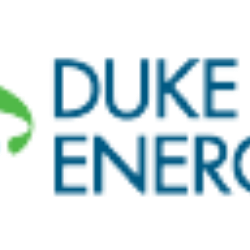SO

The Southern Company
SO
(3.0)80,69 USD
3.38% ROA
14.63% ROE
21.23x PER
97.734.155.300,00 USD
197.88% DER
3.18% Yield
17.87% NPM
The Southern Company Stock Analysis
The Southern Company Fundamental Analysis
Fundamental analysis in stock investing is like studying the foundation of a house before buying it. It involves looking at a company's financial health, like its earnings, assets, and debts, to determine if it's a good investment based on its fundamental strength and potential for growth.
| # | Analysis | Rating |
|---|---|---|
| 1 |
Assets Growth
Over the past five years, this company's revenue has consistently increased, demonstrating a robust financial performance that makes it an appealing opportunity. |
|
| 2 |
Dividend Growth
The company's dividend growth has exhibited a remarkable upward trend over the past five years, consistently delivering higher returns to investors. |
|
| 3 |
Dividend
Investors can trust the company's impressive dividend track record, consistently distributing dividends over the past five years, showcasing a strong commitment to rewarding shareholders. |
|
| 4 |
ROE
ROE in an average range (9.71%) suggests satisfactory profitability and decent utilization of shareholders' equity. |
|
| 5 |
ROA
The stock's ROA (2.25%) indicates that it's doing well in making money from the things it owns. This makes it a good option to invest and make consistent profits. |
|
| 6 |
PBV
The stock's PBV ratio (2.43x) reflects a fair valuation, making it an attractive option for investors seeking balanced opportunities. |
|
| 7 |
Revenue Growth
This company's revenue has shown remarkable growth over the past three years, making it an excellent choice for seeking a consistently prosperous investment. |
|
| 8 |
Net Profit Growth
This company's net profit has been consistently on the rise over the past three years, indicating a strong financial performance and making it an appealing investment opportunity. |
|
| 9 |
Buffet Intrinsic Value
The company's stock presents an enticing opportunity as it appears undervalued (684) by Warren Buffett's formula, indicating that its intrinsic value exceeds the market price. |
|
| 10 |
DER
The company has a high debt to equity ratio (199%), which means it owes a lot of money compared to what it actually owns, making it financially risky. |
|
| 11 |
Graham Number
The company's Graham number suggests that its stock price is overestimated, implying that it may not be a promising investment opportunity. |
The Southern Company Technical Analysis
Technical analysis in stock investing is like reading the patterns on a weather map to predict future weather conditions. It involves studying past stock price movements and trading volumes to make predictions about where a stock's price might go next, without necessarily looking at the company's financial health.
| # | Analysis | Recommendation |
|---|---|---|
| 1 | Awesome Oscillator | Buy |
| 2 | MACD | Buy |
| 3 | RSI | Hold |
| 4 | Stoch RSI | Sell |
The Southern Company Price Chart
Financial Statements
Financial statements are like report cards for companies. They show how much money a company makes (income statement), what it owns and owes (balance sheet), and where it spends its money (cash flow statement), helping stock investors understand if a company is healthy and worth investing in.
Income Statements
An income statement for a company is like a scoreboard for its profits and losses. It shows how much money the company made (revenue) and how much it spent to make that money (expenses), helping stock investors see if a company is making a profit or not.
Revenue in stock investing is the total amount of money a company earns from its sales, and it's a key factor that investors consider to assess a company's financial performance and growth potential.
| Year | Revenue | Growth |
|---|---|---|
| 1985 | 6.813.900.000 | |
| 1986 | 6.846.600.000 | 0.48% |
| 1987 | 7.010.400.000 | 2.34% |
| 1988 | 7.235.000.000 | 3.1% |
| 1989 | 7.492.000.000 | 3.43% |
| 1990 | 7.975.000.000 | 6.06% |
| 1991 | 8.050.000.000 | 0.93% |
| 1992 | 8.073.000.000 | 0.28% |
| 1993 | 8.489.000.000 | 4.9% |
| 1994 | 8.297.000.000 | -2.31% |
| 1995 | 9.180.000.000 | 9.62% |
| 1996 | 10.358.000.000 | 11.37% |
| 1997 | 12.611.000.000 | 17.87% |
| 1998 | 11.403.000.000 | -10.59% |
| 1999 | 11.585.000.000 | 1.57% |
| 2000 | 10.066.000.000 | -15.09% |
| 2001 | 10.155.000.000 | 0.88% |
| 2002 | 10.549.000.000 | 3.73% |
| 2003 | 11.251.000.000 | 6.24% |
| 2004 | 11.902.000.000 | 5.47% |
| 2005 | 13.554.000.000 | 12.19% |
| 2006 | 14.356.000.000 | 5.59% |
| 2007 | 15.353.000.000 | 6.49% |
| 2008 | 17.127.000.000 | 10.36% |
| 2009 | 15.743.000.000 | -8.79% |
| 2010 | 17.456.000.000 | 9.81% |
| 2011 | 17.657.000.000 | 1.14% |
| 2012 | 16.537.000.000 | -6.77% |
| 2013 | 17.087.000.000 | 3.22% |
| 2014 | 18.499.000.000 | 7.63% |
| 2015 | 17.527.000.000 | -5.55% |
| 2016 | 19.896.000.000 | 11.91% |
| 2017 | 23.031.000.000 | 13.61% |
| 2018 | 23.495.000.000 | 1.97% |
| 2019 | 21.419.000.000 | -9.69% |
| 2020 | 20.375.000.000 | -5.12% |
| 2021 | 23.113.000.000 | 11.85% |
| 2022 | 29.279.000.000 | 21.06% |
| 2023 | 27.920.000.000 | -4.87% |
| 2023 | 25.253.000.000 | -10.56% |
| 2024 | 25.852.000.000 | 2.32% |
Research and Development Expenses are the costs a company incurs to create and improve its products or services, which can be important for investors to evaluate a company's innovation and potential for future growth.
| Year | Research and Development Expenses | Growth |
|---|---|---|
| 1985 | 0 | |
| 1986 | 0 | 0% |
| 1987 | 0 | 0% |
| 1988 | 0 | 0% |
| 1989 | 0 | 0% |
| 1990 | 0 | 0% |
| 1991 | 0 | 0% |
| 1992 | 0 | 0% |
| 1993 | 0 | 0% |
| 1994 | 0 | 0% |
| 1995 | 0 | 0% |
| 1996 | 0 | 0% |
| 1997 | 0 | 0% |
| 1998 | 0 | 0% |
| 1999 | 0 | 0% |
| 2000 | 0 | 0% |
| 2001 | 0 | 0% |
| 2002 | 0 | 0% |
| 2003 | 0 | 0% |
| 2004 | 0 | 0% |
| 2005 | 0 | 0% |
| 2006 | 0 | 0% |
| 2007 | 0 | 0% |
| 2008 | 0 | 0% |
| 2009 | 0 | 0% |
| 2010 | 0 | 0% |
| 2011 | 0 | 0% |
| 2012 | 0 | 0% |
| 2013 | 0 | 0% |
| 2014 | 0 | 0% |
| 2015 | 0 | 0% |
| 2016 | 0 | 0% |
| 2017 | 0 | 0% |
| 2018 | 0 | 0% |
| 2019 | 0 | 0% |
| 2020 | 0 | 0% |
| 2021 | 0 | 0% |
| 2022 | 0 | 0% |
| 2023 | 0 | 0% |
| 2023 | 0 | 0% |
| 2024 | 0 | 0% |
General and Administrative Expenses are the costs a company incurs to run its day-to-day operations, such as office rent, salaries, and utilities, which investors consider to understand a company's overall efficiency and management effectiveness.
| Year | General and Administrative Expenses | Growth |
|---|---|---|
| 1985 | 0 | |
| 1986 | 0 | 0% |
| 1987 | 0 | 0% |
| 1988 | 0 | 0% |
| 1989 | 0 | 0% |
| 1990 | 0 | 0% |
| 1991 | 0 | 0% |
| 1992 | 0 | 0% |
| 1993 | 0 | 0% |
| 1994 | 0 | 0% |
| 1995 | 0 | 0% |
| 1996 | 0 | 0% |
| 1997 | 0 | 0% |
| 1998 | 0 | 0% |
| 1999 | 0 | 0% |
| 2000 | 0 | 0% |
| 2001 | 0 | 0% |
| 2002 | 0 | 0% |
| 2003 | 0 | 0% |
| 2004 | 0 | 0% |
| 2005 | 0 | 0% |
| 2006 | 0 | 0% |
| 2007 | 0 | 0% |
| 2008 | 0 | 0% |
| 2009 | 202.000.000 | 100% |
| 2010 | 0 | 0% |
| 2011 | 0 | 0% |
| 2012 | 0 | 0% |
| 2013 | 0 | 0% |
| 2014 | 0 | 0% |
| 2015 | 0 | 0% |
| 2016 | 0 | 0% |
| 2017 | 0 | 0% |
| 2018 | 0 | 0% |
| 2019 | 0 | 0% |
| 2020 | 0 | 0% |
| 2021 | 0 | 0% |
| 2022 | 0 | 0% |
| 2023 | 0 | 0% |
| 2023 | 0 | 0% |
| 2024 | 0 | 0% |
EBITDA stands for Earnings Before Interest, Taxes, Depreciation, and Amortization. It is a measure that helps stock investors analyze a company's profitability by looking at its earnings without considering certain expenses. This helps to get a clearer picture of the company's financial performance and its ability to generate cash flow.
| Year | EBITDA | Growth |
|---|---|---|
| 1985 | 6.813.900.000 | |
| 1986 | 6.846.600.000 | 0.48% |
| 1987 | 7.010.400.000 | 2.34% |
| 1988 | 7.235.000.000 | 3.1% |
| 1989 | 7.492.000.000 | 3.43% |
| 1990 | 7.975.000.000 | 6.06% |
| 1991 | 8.050.000.000 | 0.93% |
| 1992 | 8.073.000.000 | 0.28% |
| 1993 | 8.489.000.000 | 4.9% |
| 1994 | 3.487.000.000 | -143.45% |
| 1995 | 3.973.000.000 | 12.23% |
| 1996 | 3.823.000.000 | -3.92% |
| 1997 | 4.242.000.000 | 9.88% |
| 1998 | 3.744.000.000 | -13.3% |
| 1999 | 4.503.000.000 | 16.86% |
| 2000 | 3.792.000.000 | -18.75% |
| 2001 | 3.776.000.000 | -0.42% |
| 2002 | 3.670.000.000 | -2.89% |
| 2003 | 3.834.000.000 | 4.28% |
| 2004 | 3.865.000.000 | 0.8% |
| 2005 | 4.351.000.000 | 11.17% |
| 2006 | 4.675.000.000 | 6.93% |
| 2007 | 5.004.000.000 | 6.57% |
| 2008 | 5.310.000.000 | 5.76% |
| 2009 | 4.982.000.000 | -6.58% |
| 2010 | 5.767.000.000 | 13.61% |
| 2011 | 6.399.000.000 | 9.88% |
| 2012 | 6.732.000.000 | 4.95% |
| 2013 | 5.553.000.000 | -21.23% |
| 2014 | 5.935.000.000 | 6.44% |
| 2015 | 6.677.000.000 | 11.11% |
| 2016 | 7.690.000.000 | 13.17% |
| 2017 | 6.163.000.000 | -24.78% |
| 2018 | 8.113.000.000 | 24.04% |
| 2019 | 11.610.000.000 | 30.12% |
| 2020 | 9.197.000.000 | -26.24% |
| 2021 | 8.314.000.000 | -10.62% |
| 2022 | 9.969.000.000 | 16.6% |
| 2023 | 14.184.000.000 | 29.72% |
| 2023 | 11.745.000.000 | -20.77% |
| 2024 | 12.888.000.000 | 8.87% |
Gross profit is the money a company makes from selling its products or services after subtracting the cost of producing or providing them, and it is an important measure for investors to understand a company's profitability.
| Year | Gross Profit | Growth |
|---|---|---|
| 1985 | 6.813.900.000 | |
| 1986 | 6.846.600.000 | 0.48% |
| 1987 | 7.010.400.000 | 2.34% |
| 1988 | 7.235.000.000 | 3.1% |
| 1989 | 7.492.000.000 | 3.43% |
| 1990 | 7.975.000.000 | 6.06% |
| 1991 | 8.050.000.000 | 0.93% |
| 1992 | 8.073.000.000 | 0.28% |
| 1993 | 8.489.000.000 | 4.9% |
| 1994 | 5.962.000.000 | -42.39% |
| 1995 | 6.563.000.000 | 9.16% |
| 1996 | 5.150.000.000 | -27.44% |
| 1997 | 5.367.000.000 | 4.04% |
| 1998 | 5.677.000.000 | 5.46% |
| 1999 | 5.712.000.000 | 0.61% |
| 2000 | 4.963.000.000 | -15.09% |
| 2001 | 5.008.000.000 | 0.9% |
| 2002 | 5.146.000.000 | 2.68% |
| 2003 | 5.445.000.000 | 5.49% |
| 2004 | 5.436.000.000 | -0.17% |
| 2005 | 8.328.000.000 | 34.73% |
| 2006 | 8.661.000.000 | 3.84% |
| 2007 | 8.982.000.000 | 3.57% |
| 2008 | 9.494.000.000 | 5.39% |
| 2009 | 5.800.000.000 | -63.69% |
| 2010 | 6.184.000.000 | 6.21% |
| 2011 | 6.849.000.000 | 9.71% |
| 2012 | 7.145.000.000 | 4.14% |
| 2013 | 7.259.000.000 | 1.57% |
| 2014 | 7.466.000.000 | 2.77% |
| 2015 | 7.678.000.000 | 2.76% |
| 2016 | 8.672.000.000 | 11.46% |
| 2017 | 10.173.000.000 | 14.75% |
| 2018 | 9.653.000.000 | -5.39% |
| 2019 | 9.627.000.000 | -0.27% |
| 2020 | 9.897.000.000 | 2.73% |
| 2021 | 10.061.000.000 | 1.63% |
| 2022 | 10.821.000.000 | 7.02% |
| 2023 | 15.016.000.000 | 27.94% |
| 2023 | 11.708.000.000 | -28.25% |
| 2024 | 9.184.000.000 | -27.48% |
Net income in stock investing is like the money a company actually gets to keep as profit after paying all its bills, and it's an important measure to understand how well a company is doing financially.
| Year | Net Profit | Growth |
|---|---|---|
| 1985 | 829.600.000 | |
| 1986 | 883.000.000 | 6.05% |
| 1987 | 554.400.000 | -59.27% |
| 1988 | 846.000.000 | 34.47% |
| 1989 | 846.000.000 | 0% |
| 1990 | 603.500.000 | -40.18% |
| 1991 | 876.000.000 | 31.11% |
| 1992 | 953.000.000 | 8.08% |
| 1993 | 1.002.000.000 | 4.89% |
| 1994 | 989.000.000 | -1.31% |
| 1995 | 1.103.000.000 | 10.34% |
| 1996 | 1.127.000.000 | 2.13% |
| 1997 | 972.000.000 | -15.95% |
| 1998 | 977.000.000 | 0.51% |
| 1999 | 1.276.000.000 | 23.43% |
| 2000 | 1.313.000.000 | 2.82% |
| 2001 | 1.262.000.000 | -4.04% |
| 2002 | 1.318.000.000 | 4.25% |
| 2003 | 1.474.000.000 | 10.58% |
| 2004 | 1.532.000.000 | 3.79% |
| 2005 | 1.591.000.000 | 3.71% |
| 2006 | 1.573.000.000 | -1.14% |
| 2007 | 1.734.000.000 | 9.28% |
| 2008 | 1.807.000.000 | 4.04% |
| 2009 | 1.708.000.000 | -5.8% |
| 2010 | 2.040.000.000 | 16.27% |
| 2011 | 2.268.000.000 | 10.05% |
| 2012 | 2.415.000.000 | 6.09% |
| 2013 | 1.710.000.000 | -41.23% |
| 2014 | 2.031.000.000 | 15.81% |
| 2015 | 2.421.000.000 | 16.11% |
| 2016 | 2.493.000.000 | 2.89% |
| 2017 | 880.000.000 | -183.3% |
| 2018 | 2.242.000.000 | 60.75% |
| 2019 | 4.754.000.000 | 52.84% |
| 2020 | 3.134.000.000 | -51.69% |
| 2021 | 2.408.000.000 | -30.15% |
| 2022 | 3.535.000.000 | 31.88% |
| 2023 | 5.688.000.000 | 37.85% |
| 2023 | 3.976.000.000 | -43.06% |
| 2024 | 4.812.000.000 | 17.37% |
EPS, or earnings per share, is a measure that shows how much profit a company has earned for each outstanding share of its stock, and it is important for stock investors as it helps understand the profitability of a company and compare it with other companies in the market.
| Year | Earning per Share (EPS) | Growth |
|---|---|---|
| 1985 | 2 | |
| 1986 | 2 | 0% |
| 1987 | 1 | 0% |
| 1988 | 1 | 100% |
| 1989 | 1 | 0% |
| 1990 | 1 | 0% |
| 1991 | 1 | 100% |
| 1992 | 2 | 0% |
| 1993 | 2 | 0% |
| 1994 | 2 | 0% |
| 1995 | 2 | 0% |
| 1996 | 2 | 0% |
| 1997 | 1 | 0% |
| 1998 | 1 | 0% |
| 1999 | 2 | 0% |
| 2000 | 2 | 50% |
| 2001 | 2 | -100% |
| 2002 | 2 | 0% |
| 2003 | 2 | 50% |
| 2004 | 2 | 0% |
| 2005 | 2 | 0% |
| 2006 | 2 | 0% |
| 2007 | 2 | 0% |
| 2008 | 2 | 0% |
| 2009 | 2 | 0% |
| 2010 | 2 | 0% |
| 2011 | 3 | 0% |
| 2012 | 3 | 0% |
| 2013 | 2 | -100% |
| 2014 | 2 | 50% |
| 2015 | 3 | 0% |
| 2016 | 2 | 0% |
| 2017 | 1 | 0% |
| 2018 | 2 | 100% |
| 2019 | 5 | 50% |
| 2020 | 3 | -100% |
| 2021 | 2 | 0% |
| 2022 | 3 | 33.33% |
| 2023 | 5 | 40% |
| 2023 | 4 | -66.67% |
| 2024 | 4 | 25% |
Cashflow Statements
Cashflow statements show the movement of money in and out of a company, helping stock investors understand how much money a company makes and spends. By examining cashflow statements, investors can assess if a company is generating enough cash to pay its bills, invest in growth, and provide returns to stockholders.
Free cash flow is the leftover cash that a company generates after covering its operating expenses and capital expenditures, which is important for stock investors as it shows how much money a company has available to invest in growth, pay dividends, or reduce debt.
| Year | Free Cashflow | Growth |
|---|---|---|
| 1994 | 575.000.000 | |
| 1995 | 914.000.000 | 37.09% |
| 1996 | 1.172.000.000 | 22.01% |
| 1997 | 766.000.000 | -53% |
| 1998 | 743.000.000 | -3.1% |
| 1999 | 163.000.000 | -355.83% |
| 2000 | 593.000.000 | 72.51% |
| 2001 | -233.000.000 | 354.51% |
| 2002 | 114.000.000 | 304.39% |
| 2003 | 1.064.000.000 | 89.29% |
| 2004 | 582.000.000 | -82.82% |
| 2005 | 160.000.000 | -263.75% |
| 2006 | -174.000.000 | 191.95% |
| 2007 | -150.000.000 | -16% |
| 2008 | -563.000.000 | 73.36% |
| 2009 | -1.407.000.000 | 59.99% |
| 2010 | -95.000.000 | -1381.05% |
| 2011 | 1.378.000.000 | 106.89% |
| 2012 | 89.000.000 | -1448.31% |
| 2013 | 634.000.000 | 85.96% |
| 2014 | -162.000.000 | 491.36% |
| 2015 | -1.119.000.000 | 85.52% |
| 2016 | -2.416.000.000 | 53.68% |
| 2017 | -1.028.000.000 | -135.02% |
| 2018 | -1.056.000.000 | 2.65% |
| 2019 | -1.774.000.000 | 40.47% |
| 2020 | -745.000.000 | -138.12% |
| 2021 | -1.071.000.000 | 30.44% |
| 2022 | -1.621.000.000 | 33.93% |
| 2023 | 177.000.000 | 1015.82% |
| 2023 | -1.542.000.000 | 111.48% |
| 2024 | 419.000.000 | 468.02% |
Operating cash flow represents the cash generated or consumed by a company's day-to-day operations, excluding external investing or financing activities, and is crucial for stock investors as it shows how much cash a company is generating from its core business operations.
| Year | Operating Cashflow | Growth |
|---|---|---|
| 1994 | 2.111.000.000 | |
| 1995 | 2.315.000.000 | 8.81% |
| 1996 | 2.401.000.000 | 3.58% |
| 1997 | 2.625.000.000 | 8.53% |
| 1998 | 2.748.000.000 | 4.48% |
| 1999 | 2.723.000.000 | -0.92% |
| 2000 | 2.818.000.000 | 3.37% |
| 2001 | 2.384.000.000 | -18.2% |
| 2002 | 2.831.000.000 | 15.79% |
| 2003 | 3.066.000.000 | 7.66% |
| 2004 | 2.692.000.000 | -13.89% |
| 2005 | 2.530.000.000 | -6.4% |
| 2006 | 2.820.000.000 | 10.28% |
| 2007 | 3.395.000.000 | 16.94% |
| 2008 | 3.398.000.000 | 0.09% |
| 2009 | 3.263.000.000 | -4.14% |
| 2010 | 3.991.000.000 | 18.24% |
| 2011 | 5.903.000.000 | 32.39% |
| 2012 | 4.898.000.000 | -20.52% |
| 2013 | 6.097.000.000 | 19.67% |
| 2014 | 5.815.000.000 | -4.85% |
| 2015 | 6.274.000.000 | 7.32% |
| 2016 | 4.894.000.000 | -28.2% |
| 2017 | 6.395.000.000 | 23.47% |
| 2018 | 6.945.000.000 | 7.92% |
| 2019 | 5.781.000.000 | -20.13% |
| 2020 | 6.696.000.000 | 13.66% |
| 2021 | 6.169.000.000 | -8.54% |
| 2022 | 6.302.000.000 | 2.11% |
| 2023 | 2.840.000.000 | -121.9% |
| 2023 | 7.553.000.000 | 62.4% |
| 2024 | 2.688.000.000 | -180.99% |
Capex, short for capital expenditures, refers to the money a company spends on acquiring or upgrading tangible assets like buildings, equipment, or technology, which is important for stock investors as it indicates how much a company is investing in its infrastructure to support future growth and profitability.
| Year | Capital Expenditure | Growth |
|---|---|---|
| 1994 | 1.536.000.000 | |
| 1995 | 1.401.000.000 | -9.64% |
| 1996 | 1.229.000.000 | -14% |
| 1997 | 1.859.000.000 | 33.89% |
| 1998 | 2.005.000.000 | 7.28% |
| 1999 | 2.560.000.000 | 21.68% |
| 2000 | 2.225.000.000 | -15.06% |
| 2001 | 2.617.000.000 | 14.98% |
| 2002 | 2.717.000.000 | 3.68% |
| 2003 | 2.002.000.000 | -35.71% |
| 2004 | 2.110.000.000 | 5.12% |
| 2005 | 2.370.000.000 | 10.97% |
| 2006 | 2.994.000.000 | 20.84% |
| 2007 | 3.545.000.000 | 15.54% |
| 2008 | 3.961.000.000 | 10.5% |
| 2009 | 4.670.000.000 | 15.18% |
| 2010 | 4.086.000.000 | -14.29% |
| 2011 | 4.525.000.000 | 9.7% |
| 2012 | 4.809.000.000 | 5.91% |
| 2013 | 5.463.000.000 | 11.97% |
| 2014 | 5.977.000.000 | 8.6% |
| 2015 | 7.393.000.000 | 19.15% |
| 2016 | 7.310.000.000 | -1.14% |
| 2017 | 7.423.000.000 | 1.52% |
| 2018 | 8.001.000.000 | 7.22% |
| 2019 | 7.555.000.000 | -5.9% |
| 2020 | 7.441.000.000 | -1.53% |
| 2021 | 7.240.000.000 | -2.78% |
| 2022 | 7.923.000.000 | 8.62% |
| 2023 | 2.663.000.000 | -197.52% |
| 2023 | 9.095.000.000 | 70.72% |
| 2024 | 2.269.000.000 | -300.84% |
Balance Sheet
Balance sheets provide a snapshot of a company's financial health and its assets (such as cash, inventory, and property) and liabilities (like debts and obligations) at a specific point in time. For stock investors, balance sheets help assess the company's overall worth and evaluate its ability to meet financial obligations and support future growth.
Equity refers to the ownership interest or stake that shareholders have in a company, representing their claim on its assets and earnings after all debts and liabilities are paid.
| Year | Equity | Growth |
|---|---|---|
| 1994 | 8.186.000.000 | |
| 1995 | 9.003.000.000 | 9.07% |
| 1996 | 10.571.000.000 | 14.83% |
| 1997 | 10.575.000.000 | 0.04% |
| 1998 | 10.701.000.000 | 1.18% |
| 1999 | 10.298.000.000 | -3.91% |
| 2000 | 11.058.000.000 | 6.87% |
| 2001 | 8.352.000.000 | -32.4% |
| 2002 | 9.008.000.000 | 7.28% |
| 2003 | 10.071.000.000 | 10.56% |
| 2004 | 10.839.000.000 | 7.09% |
| 2005 | 11.285.000.000 | 3.95% |
| 2006 | 12.115.000.000 | 6.85% |
| 2007 | 13.465.000.000 | 10.03% |
| 2008 | 14.358.000.000 | 6.22% |
| 2009 | 15.585.000.000 | 7.87% |
| 2010 | 16.909.000.000 | 7.83% |
| 2011 | 18.285.000.000 | 7.53% |
| 2012 | 20.086.000.000 | 8.97% |
| 2013 | 20.895.000.000 | 3.87% |
| 2014 | 21.301.000.000 | 1.91% |
| 2015 | 22.100.000.000 | 3.62% |
| 2016 | 26.730.000.000 | 17.32% |
| 2017 | 25.852.000.000 | -3.4% |
| 2018 | 29.330.000.000 | 11.86% |
| 2019 | 32.050.000.000 | 8.49% |
| 2020 | 32.525.000.000 | 1.46% |
| 2021 | 32.566.000.000 | 0.13% |
| 2022 | 34.532.000.000 | 5.69% |
| 2023 | 35.304.000.000 | 2.19% |
| 2023 | 35.225.000.000 | -0.22% |
| 2024 | 36.111.000.000 | 2.45% |
Assets represent the valuable resources that a company owns, such as cash, inventory, property, and equipment, and understanding a company's assets helps investors assess its value and potential for generating future profits.
| Year | Assets | Growth |
|---|---|---|
| 1994 | 27.042.000.000 | |
| 1995 | 30.554.000.000 | 11.49% |
| 1996 | 30.292.000.000 | -0.86% |
| 1997 | 35.271.000.000 | 14.12% |
| 1998 | 36.192.000.000 | 2.54% |
| 1999 | 38.396.000.000 | 5.74% |
| 2000 | 31.362.000.000 | -22.43% |
| 2001 | 29.824.000.000 | -5.16% |
| 2002 | 31.799.000.000 | 6.21% |
| 2003 | 35.045.000.000 | 9.26% |
| 2004 | 36.962.000.000 | 5.19% |
| 2005 | 39.877.000.000 | 7.31% |
| 2006 | 42.858.000.000 | 6.96% |
| 2007 | 45.789.000.000 | 6.4% |
| 2008 | 48.347.000.000 | 5.29% |
| 2009 | 52.046.000.000 | 7.11% |
| 2010 | 55.032.000.000 | 5.43% |
| 2011 | 59.267.000.000 | 7.15% |
| 2012 | 63.149.000.000 | 6.15% |
| 2013 | 64.546.000.000 | 2.16% |
| 2014 | 70.923.000.000 | 8.99% |
| 2015 | 78.318.000.000 | 9.44% |
| 2016 | 109.697.000.000 | 28.61% |
| 2017 | 111.005.000.000 | 1.18% |
| 2018 | 116.914.000.000 | 5.05% |
| 2019 | 118.700.000.000 | 1.5% |
| 2020 | 122.935.000.000 | 3.44% |
| 2021 | 127.534.000.000 | 3.61% |
| 2022 | 134.891.000.000 | 5.45% |
| 2023 | 138.321.000.000 | 2.48% |
| 2023 | 139.331.000.000 | 0.72% |
| 2024 | 141.937.000.000 | 1.84% |
Liabilities refer to the financial obligations or debts that a company owes to creditors or external parties, and understanding a company's liabilities is important for investors as it helps assess the company's financial risk and ability to meet its obligations.
| Year | Liabilities | Growth |
|---|---|---|
| 1994 | 18.856.000.000 | |
| 1995 | 21.551.000.000 | 12.51% |
| 1996 | 19.721.000.000 | -9.28% |
| 1997 | 24.696.000.000 | 20.14% |
| 1998 | 25.491.000.000 | 3.12% |
| 1999 | 28.098.000.000 | 9.28% |
| 2000 | 20.304.000.000 | -38.39% |
| 2001 | 21.472.000.000 | 5.44% |
| 2002 | 22.791.000.000 | 5.79% |
| 2003 | 24.974.000.000 | 8.74% |
| 2004 | 26.123.000.000 | 4.4% |
| 2005 | 28.592.000.000 | 8.64% |
| 2006 | 30.743.000.000 | 7% |
| 2007 | 32.324.000.000 | 4.89% |
| 2008 | 33.989.000.000 | 4.9% |
| 2009 | 36.461.000.000 | 6.78% |
| 2010 | 38.123.000.000 | 4.36% |
| 2011 | 40.982.000.000 | 6.98% |
| 2012 | 43.770.000.000 | 6.37% |
| 2013 | 44.407.000.000 | 1.43% |
| 2014 | 49.622.000.000 | 10.51% |
| 2015 | 56.218.000.000 | 11.73% |
| 2016 | 82.967.000.000 | 32.24% |
| 2017 | 85.153.000.000 | 2.57% |
| 2018 | 87.584.000.000 | 2.78% |
| 2019 | 86.650.000.000 | -1.08% |
| 2020 | 90.410.000.000 | 4.16% |
| 2021 | 94.968.000.000 | 4.8% |
| 2022 | 100.359.000.000 | 5.37% |
| 2023 | 103.017.000.000 | 2.58% |
| 2023 | 104.106.000.000 | 1.05% |
| 2024 | 105.826.000.000 | 1.63% |
The Southern Company Financial Ratio (TTM)
Valuation Metrics
- Revenue per Share
- 23.84
- Net Income per Share
- 4.21
- Price to Earning Ratio
- 21.23x
- Price To Sales Ratio
- 3.74x
- POCF Ratio
- 11.31
- PFCF Ratio
- -135.37
- Price to Book Ratio
- 3.02
- EV to Sales
- 6.2
- EV Over EBITDA
- 13.11
- EV to Operating CashFlow
- 18.73
- EV to FreeCashFlow
- -224.45
- Earnings Yield
- 0.05
- FreeCashFlow Yield
- -0.01
- Market Cap
- 97,73 Bil.
- Enterprise Value
- 162,06 Bil.
- Graham Number
- 52.93
- Graham NetNet
- -91.04
Income Statement Metrics
- Net Income per Share
- 4.21
- Income Quality
- 1.9
- ROE
- 0.14
- Return On Assets
- 0.03
- Return On Capital Employed
- 0.05
- Net Income per EBT
- 0.86
- EBT Per Ebit
- 0.77
- Ebit per Revenue
- 0.27
- Effective Tax Rate
- 0.16
Margins
- Sales, General, & Administrative to Revenue
- 0
- Research & Developement to Revenue
- 0
- Stock Based Compensation to Revenue
- 0
- Gross Profit Margin
- 0.41
- Operating Profit Margin
- 0.27
- Pretax Profit Margin
- 0.21
- Net Profit Margin
- 0.18
Dividends
- Dividend Yield
- 0.03
- Dividend Yield %
- 3.18
- Payout Ratio
- 0.65
- Dividend Per Share
- 2.84
Operating Metrics
- Operating Cashflow per Share
- 7.89
- Free CashFlow per Share
- -0.66
- Capex to Operating CashFlow
- 1.08
- Capex to Revenue
- 0.36
- Capex to Depreciation
- 1.83
- Return on Invested Capital
- 0.06
- Return on Tangible Assets
- 0.03
- Days Sales Outstanding
- 59.72
- Days Payables Outstanding
- 57.51
- Days of Inventory on Hand
- 77.31
- Receivables Turnover
- 6.11
- Payables Turnover
- 6.35
- Inventory Turnover
- 4.72
- Capex per Share
- 8.55
Balance Sheet
- Cash per Share
- 1,09
- Book Value per Share
- 32,95
- Tangible Book Value per Share
- 27.92
- Shareholders Equity per Share
- 29.61
- Interest Debt per Share
- 60.97
- Debt to Equity
- 1.98
- Debt to Assets
- 0.45
- Net Debt to EBITDA
- 5.2
- Current Ratio
- 0.91
- Tangible Asset Value
- 30,60 Bil.
- Net Current Asset Value
- -94,83 Bil.
- Invested Capital
- 107794000000
- Working Capital
- -1,04 Bil.
- Intangibles to Total Assets
- 0.04
- Average Receivables
- 4,11 Bil.
- Average Payables
- 2,30 Bil.
- Average Inventory
- 3277500000
- Debt to Market Cap
- 0.66
Dividends
Dividends in stock investing are like rewards that companies give to their shareholders. They are a portion of the company's profits distributed to investors, typically in the form of cash payments, as a way for them to share in the company's success.
| Year | Dividends | Growth |
|---|---|---|
| 1982 | 2 | |
| 1983 | 2 | 0% |
| 1984 | 2 | 0% |
| 1985 | 2 | 0% |
| 1986 | 2 | 50% |
| 1987 | 2 | 0% |
| 1988 | 2 | 0% |
| 1989 | 2 | 0% |
| 1990 | 2 | 0% |
| 1991 | 2 | 0% |
| 1992 | 2 | 0% |
| 1993 | 2 | 0% |
| 1994 | 1 | -100% |
| 1995 | 1 | 0% |
| 1996 | 1 | 0% |
| 1997 | 1 | 0% |
| 1998 | 1 | 0% |
| 1999 | 1 | 0% |
| 2000 | 1 | 0% |
| 2001 | 1 | 0% |
| 2002 | 1 | 0% |
| 2003 | 1 | 0% |
| 2004 | 1 | 0% |
| 2005 | 1 | 0% |
| 2006 | 2 | 0% |
| 2007 | 2 | 0% |
| 2008 | 2 | 0% |
| 2009 | 2 | 0% |
| 2010 | 2 | 0% |
| 2011 | 2 | 0% |
| 2012 | 2 | 0% |
| 2013 | 2 | 50% |
| 2014 | 2 | 0% |
| 2015 | 2 | 0% |
| 2016 | 2 | 0% |
| 2017 | 2 | 0% |
| 2018 | 2 | 0% |
| 2019 | 2 | 0% |
| 2020 | 3 | 0% |
| 2021 | 3 | 0% |
| 2022 | 3 | 0% |
| 2023 | 3 | 0% |
| 2024 | 2 | 0% |
The Southern Company Profile
About The Southern Company
The Southern Company, through its subsidiaries, engages in the generation, transmission, and distribution of electricity. It operates through Gas Distribution Operations, Gas Pipeline Investments, Wholesale Gas Services, and Gas Marketing Services segments. The company also develops, constructs, acquires, owns, and manages power generation assets, including renewable energy projects and sells electricity in the wholesale market; and distributes natural gas in Illinois, Georgia, Virginia, and Tennessee, as well as provides gas marketing services, wholesale gas services, and gas pipeline investments operations. In addition, it owns and/or operates 30 hydroelectric generating stations, 24 fossil fuel generating stations, three nuclear generating stations, 13 combined cycle/cogeneration stations, 45 solar facilities, 15 wind facilities, one fuel cell facility, and four battery storage facility; and constructs, operates, and maintains 76,289 miles of natural gas pipelines and 14 storage facilities with total capacity of 157 Bcf to provide natural gas to residential, commercial, and industrial customers. The company serves approximately 8.7 million electric and gas utility customers. Further, the company offers digital wireless communications and fiber optics services. The Southern Company was incorporated in 1945 and is headquartered in Atlanta, Georgia.
- CEO
- Mr. Christopher C. Womack
- Employee
- 27.819
- Address
-
30 Ivan Allen Jr. Boulevard, N.W.
Atlanta, 30308
The Southern Company Executives & BODs
| # | Name | Age |
|---|---|---|
| 1 |
Mr. Christopher C. Womack Chief Executive Officer, President & Chairman |
70 |
| 2 |
Mr. James Y. Kerr II Chief Executive Officer, President & Chairman of Southern Company Gas |
70 |
| 3 |
Mr. Martin Bernard Davis Chief Information Officer & Executive Vice President |
70 |
| 4 |
Mr. Greg MacLeod Director of Investor Relations |
70 |
| 5 |
Mr. David P. Poroch Comptroller & Chief Accounting Officer |
70 |
| 6 |
Ms. Sloane N. Drake Executive Vice President & Chief Human Resources Officer |
70 |
| 7 |
Mr. Sterling A. Spainhour Jr. EVice President & Chief Legal Officer |
70 |
| 8 |
Mr. Stanley W. Connally Jr. Executive Vice President |
70 |
| 9 |
Ms. Kimberly Scheibe Greene Chairman, President & Chief Executive Officer of Georgia Power |
70 |
| 10 |
Mr. Daniel S. Tucker Executive Vice President & Chief Financial Officer |
70 |






